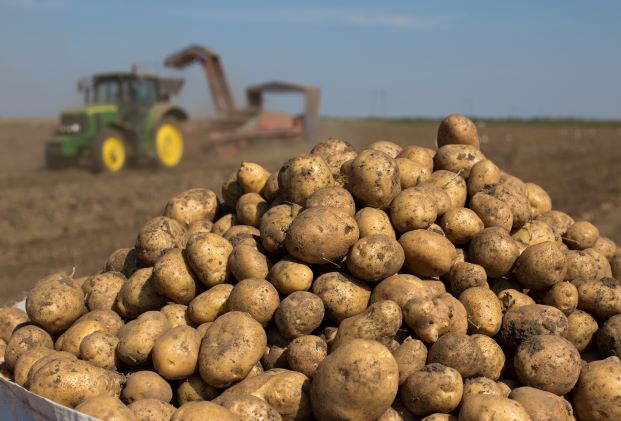Knowledge resources on potato research and guidance from AHDB have recently been archived at https://archive.ahdb.org.uk/
GB Potatoes is looking to take on some of the work and responsibility previously provided by AHDB - www.gb-potatoes.co.uk/

Potatoes are an important UK crop grown over 140,000 ha producing 5.5 Million tonnes
Knowledge resources on potato research and guidance from AHDB have recently been archived at https://archive.ahdb.org.uk/
GB Potatoes is looking to take on some of the work and responsibility previously provided by AHDB - www.gb-potatoes.co.uk/
Content below is from across the PEP community and is not necessarily endorsed by Stewards or by PEP
The major commodity crops in the UK are wheat, barley, oilseed rape, field beans, sugar beet and potatoes, but around half of agricultural land grows grass.
The Peach-Potato Aphid (PPA) known as Mysus persicae is known to feed on a wide range of plants including several grown as crops. They are known to transmit viruses to crop plants including Turnips Yellow Virus (TuYV) which can lead to yield reductions in oilseed rape.
The Potato Cyst Nematode damages the roots causing poor growth, wilting during periods of water stress and early senescence.
A group of farmers is investigating with Harper Adams University how trap crops such as sticky and African nightshade can be used as a biological management practice.
Root crops present a particular challenge to farmers who are trying to adopt regenerative practices.
Once every two years the whole of the Potato Industry comes together for this unique 'seed to shopping trolley' event. It's an exceptional networking and business opportunity for all those involved in growing, handling, processing and retailing the crop in this £multi billion industry.
Results from a field lab investigating if it's possible to irrigate with saline water.
This guide provides a good basis for achieving high-quality products.
This report aims to provide new insights into the economic contribution that the Scottish potato sector makes beyond the often cited farmgate value of potato production.
The 6th Symposium of Potato Cyst Nematode Management will cover many aspects, including international distribution, genetic diversity, sampling and decision making, population dynamics, diagnostics, integrated management, biology and application of resistance, use of effectors, rotational control, chemical control, biological control and novel control methods such as RNAi and biofumigation.
‘Knocking out susceptibility genes by genome editing in potatoes could be a durable option to increase resistance.’
Report for AHDB Abstract The AHDB is developing a What Works Centre for agriculture and
Improving connectivity in the seed potato supply chain Claire Hodges'